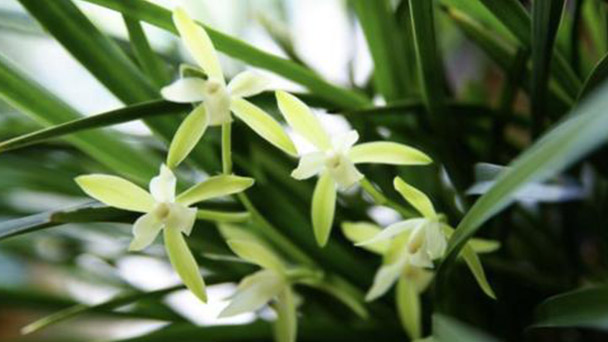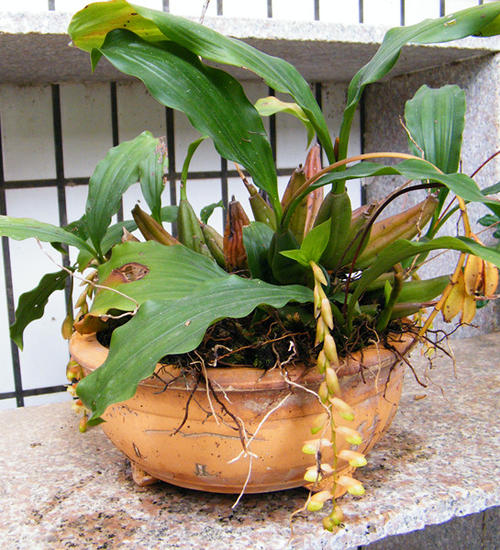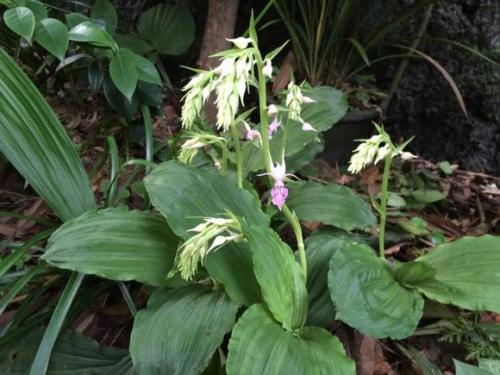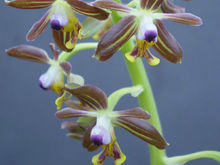Calanthe discolor profile
Written by Maggie
Mar 24 2021

Calanthe Discolor is a plant in the orchid family. There are about 150 species of the Genus Calanthe discolor, all belonging to the orchid family. Calanthe Discolor is native to Asia and South Africa, and a few species are native to Central America. There are about 40 species of Calanthe Discolor in China, all of which grow in the Yangtze River basin and areas to the south. Calanthe discolor is an ornamental plant that is widely cultivated and is easier to grow than many hard-to-grow orchids.
Calanthe Discolor stem is inconspicuous, leaves subbasal, usually 3, obliquely oblong, 15 -- 20 cm long, 3 -- 6 cm wide, acute or obtuse and short pointed: stalked, base clasps.
The calanthe discolor is a "beautiful flower". The flowers of calanthe discolor are of great ornamental value.
Calanthe Discolor picture

Morphological characteristics of Calanthe Discolor
Scapes, drawn from clumps of primary leaves, is 30-50 cm long; Racemes sparsely numbered to more than 10 flowers; Inflorescence shafts and ovary pubescent; Bracts are membranous, lanceolate, shorter than pedicels (with ovary); Flowers are spreading, perianth length about 1.3 cm, purplish red; Sepals are ovate-lanceolate, apically acute or apiculate; Petals are smaller than sepals, ovate-spatulate or ovate-lanceolate; The labellum is as long as sepals, rose or white, 3-lobed, lateral lobes axe-shaped, slightly curved inward, entire, middle lobes ovate-cuneate, apically 2-lobed, anterior margin more or less dentate, upper mask with 3 folds, apart from slender, 6-10 mm long, apically curved. Calanthe Discolor is distributed in Jiangsu and Guizhou; Japan has it. The shady and wet place under the forest on the raw hillside.
In May, the single individual floret has an everted labellum that looks like the tail of a shrimp, hence the name Calanthe discolor.
Calanthe Discolor's ecological habits
Calanthe Discolor prefers warm, humid and sunny conditions, more cold resistant, resistant to half shade, drought and high temperature. In the summer it should be cool, loose fertile and well-drained leaf rot soil or peat moss soil, in the national orchid growth area generally have distribution.
According to the biological characteristics of Calanthe Discolor nutrients, they are usually divided into two large groups: one group is evergreen species with evergreen leaves and small globular pseudobulbs; The other group is deciduous species with larger pseudobulbs, more or less angular, and deciduous in autumn.
Origin and habitat of Calanthe Discolor
Calanthe Discolor was born in evergreen broad-leaved forests between 780 and 1500 meters above sea level. It is found in Zhejiang (Anji, Hangzhou, Linan, Suichang, Songyang, Longquan, Jinyun, Taishun), Jiangsu (Jurong Baohua Mountain), Northern Fujian (Wuyi Mountain), Southeastern and southwestern Hubei (Puqi, Wufeng), Northern Guangdong (Milk source), and southern Guizhou (location unknown). It is also found in Japan (type site).

Calanthe Discolor potted points
Calanthe Discolor is often planted or potted under open forest. Potted leaf rot soil with air permeability and good drainage is added with cow dung, broken brick, and fertilization once a month during the growing period. When flower stems are extracted from leaves, phosphate potash fertilizer is applied 1-2 times.Stop watering in winter after falling leaves.
Calanthe Discolor propagation
Calanthe Discolor is commonly used for plant reproduction, after May flowers every year, the pseudobulb is removed from the pot, the old root and residual branches are cut off, divided into a single, stored in a dry, cool place, to be planted when the new bud grows to 5 cm.
Tuber meristem propagation
Seed current tubers with old stalks and tender buds.The south should be planted with digging; In the north, the plants will be stored until the next spring.
Storage method Calanthe Discolor tubers dug back and placed in a dry ventilated place for several days. Then mix 1 portion of seed stalk with 2 ~ 3 times of clean and slightly dry fine river sand and store it in a corner of a ventilated, cool and dry room. A few species stem can be mixed with fine sand and then loaded into wooden cases for storage. Do not cover the top of the box, pay attention to check often, and deal with it in time if mildew is found.
Tuber meristem propagation method
In the south of the Yangtze River, autumn planting is more than in autumn, while in the north, spring planting is more than in spring.
(1) Autumn cultivation
It is generally used as a perennial root flower, and it is more suitable in the south of the Yangtze River. Choose the tubers of Calanthe discolor that have tender buds in the current year and cut them into small pieces. Each piece should have 1 to 2 buds. Then, according to row spacing 33cm and plant spacing 23-25cm, dig holes 10-13cm deep, the base of columbine point, and plant 3 stalks in each point. When planting, the bud mouth faces each other in a triangle staggered, placed flat at the bottom of the hole. After planting, covered with fine soil or fire ash, pouring 1 time thin human and animal dung water, cover soil, and bed surface level.
(2) Spring cultivation
More used for potted plants and temperature is relatively low, can not overwintering area use. After flowering in spring of each year, remove the pseudobulbs from the pot. Cut off old roots and sticks, divide them into single pieces, store them in a dry, cool place, and plant Calanthe discolor when the new shoots are about 5cm long.
Calanthe discolor flower language
Calanthe discolor is a beautiful flower.
Calanthe discolor is a combination of the Greek word for "beautiful" and the Greek word for "beautiful flower", which means that the flowers of the genus are of great ornamental value.
Calanthe Discolor watch application
The colors of Calanthe Discolor are white, rose red, blue, purple and so on. There are both small varieties suitable for potted viewing and large varieties suitable for open field cultivation of permanent roots. There are different types of evergreen and deciduous in terms of environmental adaptability, which can adapt to cultivation and ornamental in most parts of China. Use at the balcony, windowsill and bedroom interior decoration have very good results, also being the good material of cut flowers at the same time.

Latest Updated
- Benefits of Bugleweed - 7 Science-backed Health Benefits
- Bugleweed Dangers & Side Effects - Is It Poisonous?
- How to Plant Evergreen Trees - What You Should Know
- When to Plant Evergreens - Grow Guide for Evergreen Trees
- 12 Wonderful Evergreen Shrubs for Your Garden
- 12 Popular Evergreen Plants with Pictures for Beginners
- When And How To Prune A Lilac Bush Like a Pro
- How to Grow & Care for Lilac Vine (Hardenbergia Violacea)
- Japanese Lilac Tree (Syringa Reticulata) Care & Propagation Guide
- Shumard Oak Pros and Cons - What to Know
Popular Articles
- Winter maintenance of Antirrhinum Majus
- How to Grow Terminalia Mantaly Tree
- How to Grow and Care for Crossostephium Chinense
- How to grow Antirrhinum Majus in spring
- Peristeria Elata (Dove Orchid) Profile: Info & Care Guide
- Underwatered Snake Plant (Sansevieria Trifasciata) - Signs And How To Fix
- How to Care for Brazilian Jasmine Plant (Mandevilla Sanderi)
- How to Grow & Care for Graptopetalum Purple Delight in Summer
- Rosa Chinensis (China Rose): Plant Growing & Care Tips
- How to Care for Baby Sun Rose (Aptenia Cordifolia)